Advertisements
Advertisements
प्रश्न
In triangle ABC, angle A = 90o, CA = AB and D is the point on AB produced.
Prove that DC2 - BD2 = 2AB.AD.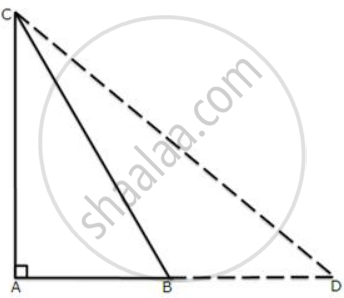
उत्तर
Pythagoras theorem states that in a right-angled triangle, the square on the hypotenuse is equal to the sum of the squares on the remaining two sides.
We consider the rt. angled ΔACD and applying Pythagoras theorem we get,
CD2 = AC2 + AD2
CD2 = AC2 + ( AB + BD )2 ....[ ∵ AD = AB + BD ]
CD2 = AC2 + AB2 + BD2 + 2AB.BD ...(i)
Similarly, in ΔABC,
BC2 = AC2 + AB2
BC2 = 2AB2 ...[ AB = AC ]
AB2 = `1/2`BC2 ...(ii)
Putting, AB2 from (ii) in (i), We get,
CD2 = AC2 + `1/2`BC2 + BD2 + 2AB . BD
CD2 - BD2 = AB2 + AB2 + 2AB . ( AD - AB )
CD2 - BD2 = AB2 + AB2 + 2AB . AD - 2AB2
CD2 - BD2 = 2AB . AD
DC2 - BD2 = 2AB . AD
Hence Proved.
APPEARS IN
संबंधित प्रश्न
In Fig., ∆ABC is an obtuse triangle, obtuse angled at B. If AD ⊥ CB, prove that AC2 = AB2 + BC2 + 2BC × BD
ABC is a right-angled triangle, right-angled at A. A circle is inscribed in it. The lengths of the two sides containing the right angle are 5 cm and 12 cm. Find the radius of the circle
The perpendicular AD on the base BC of a ∆ABC intersects BC at D so that DB = 3 CD. Prove that `2"AB"^2 = 2"AC"^2 + "BC"^2`
In Figure, ABD is a triangle right angled at A and AC ⊥ BD. Show that AD2 = BD × CD
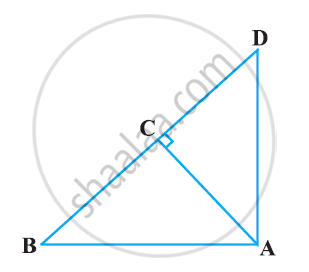
In an equilateral triangle ABC, D is a point on side BC such that BD = `1/3BC` . Prove that 9 AD2 = 7 AB2
Prove that the points A(0, −1), B(−2, 3), C(6, 7) and D(8, 3) are the vertices of a rectangle ABCD?
In the given figure, ∠DFE = 90°, FG ⊥ ED, If GD = 8, FG = 12, find (1) EG (2) FD and (3) EF

In ∆ABC, AB = 10, AC = 7, BC = 9, then find the length of the median drawn from point C to side AB.
In a trapezium ABCD, seg AB || seg DC seg BD ⊥ seg AD, seg AC ⊥ seg BC, If AD = 15, BC = 15 and AB = 25. Find A(▢ABCD)
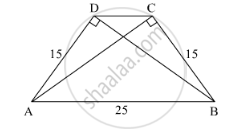
A man goes 40 m due north and then 50 m due west. Find his distance from the starting point.
Find the side of the square whose diagonal is `16sqrt(2)` cm.
Prove that `(sin θ + cosec θ)^2 + (cos θ + sec θ)^2 = 7 + tan^2 θ + cot^2 θ`.
In the given figure, angle ADB = 90°, AC = AB = 26 cm and BD = DC. If the length of AD = 24 cm; find the length of BC.
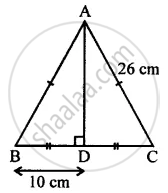
The sides of the triangle are given below. Find out which one is the right-angled triangle?
8, 15, 17
In ΔABC, AD is perpendicular to BC. Prove that: AB2 + CD2 = AC2 + BD2
In a triangle ABC, AC > AB, D is the midpoint BC, and AE ⊥ BC. Prove that: AB2 = AD2 - BC x CE + `(1)/(4)"BC"^2`
In a triangle ABC, AC > AB, D is the midpoint BC, and AE ⊥ BC. Prove that: AB2 + AC2 = 2(AD2 + CD2)
In figure, PQR is a right triangle right angled at Q and QS ⊥ PR. If PQ = 6 cm and PS = 4 cm, find QS, RS and QR.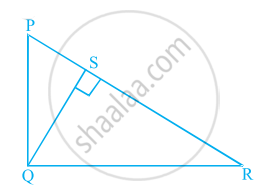
If the areas of two circles are the same, they are congruent.
